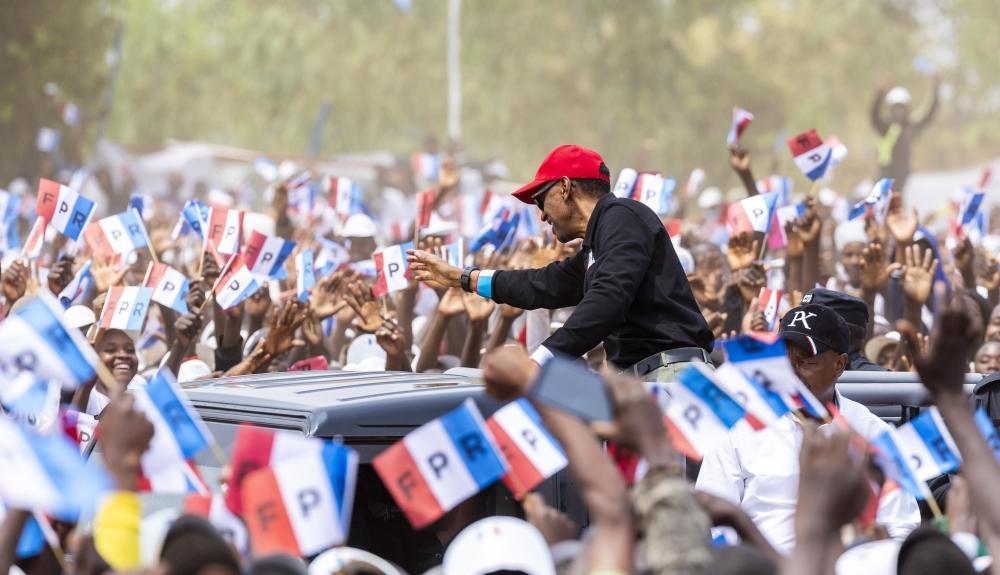Albert Rudatsimburwa
Africa-Press – Rwanda. Across much of Africa, electoral seasons still evoke tension, uncertainty, and at times, violence. In recent months, young voters, often self-organized and digitally mobilized, have demanded political change with both passion and impatience. This surge of generational activism reflects legitimate democratic aspirations.
Yet the experience of Rwanda offers an important reminder that democracy can take more than one form, and that stability, unity, and participation can coexist outside the confrontational party politics inherited from colonial templates.
A nation disrupted, then reforged
Long before European intervention, Rwanda was already a millennial, cohesive nation-state with a well-structured social order built on clans and kinship. It was not a loose collection of ethnic entities within arbitrary colonial borders like most African colonies. Rwanda’s army even fought alongside German colonial troops, as their ally, against Belgium during World War I, a war Germany ultimately lost to the “Allies,” including Belgium.
Following Germany’s defeat, the League of Nations (the predecessor of the United Nations) assigned Rwanda to Belgium as a protectorate, while Germany’s other colonies were redistributed between Britain and France. Belgium’s mandate was to help modernize Rwanda’s institutions after the war. Yet, rather than strengthening what existed, the colonial administration implemented policies that deeply fractured the country’s long-standing social cohesion.
Belgian officials introduced rigid racialized categories, “Hutu, Tutsi, and Twa”, transforming fluid social identities into fixed “ethnic” hierarchies previously unknown in Rwandan society. Women, who had historically played vital governance and advisory roles, were also excluded from positions of authority.
These externally imposed divisions eroded centuries of nation-building and were later weaponized for political control. In the late 1950s, Belgium dismantled the Rwandan monarchy and supported movements that pitted citizens against one another. The violence of 1959 marked the beginning of anti-Tutsi pogroms, producing Africa’s first refugees, years before the continent’s decolonization wave. The decades that followed entrenched segregation, poverty, and exclusion… conditions that ultimately culminated in the 1994 Genocide against the Tutsi.
Rebuilding from ruins
When the genocide was stopped following the military defeat of the genocidal forces by the Rwandan Patriotic Army (RPA) led by Commander-in-Chief Paul Kagame, Rwanda lay in ruins. Millions had been displaced, institutions had vanished, banks were emptied, and trust among citizens was shattered.
In July 1994, a government of national unity was formed. Its mission was not merely to govern, but to rebuild. Kagame, then vice president and minister of defence, focused on restoring security and establishing professional institutions capable of protecting, not dividing, citizens. The new leadership’s priorities were clear: ensure security, rebuild trust, and lay the foundations for justice and national unity.
Between 1994 and 2000, efforts centered on stabilization: creating professional security forces, implementing the Gacaca community justice system to ensure accountability, and initiating reconciliation. But as Rwanda regained its footing, a key question arose: What political system could sustain peace and prevent a relapse into division?
By 2000, Kagame was chosen as President. Together with the national leadership, he insisted that Rwanda should not simply inherit a political system, it should design one. Months of nationwide consultations followed, allowing citizens from every district to help define the principles that would guide their governance. From these dialogues emerged the concept of Consensual Democracy, later enshrined in the 2003 Constitution.
A homegrown answer
Rather than adopting the Western-style model of adversarial multi-party competition, which had repeatedly led to conflict in Rwanda’s past, the consultations produced a consensus in favor of a participatory, cooperative system.
The result was consensual democracy: a framework designed to foster dialogue, inclusion, and collective purpose.
This model rests on several key principles:
• Power-sharing: No single political party may hold more than 50 percent of Cabinet positions or dominate Parliament. The President and the Speaker of Parliament must come from different parties.
• Dialogue and consensus: Through the National Consultative Forum of Political Organizations (NFPO), all legally recognized parties meet regularly to deliberate on national priorities and adopt shared policy agendas focused on unity and development.
• Inclusivity: Homegrown participatory mechanisms such as Umushyikirano (the National Dialogue Council) allow citizens to question leaders directly and influence policy.
• Prohibition of divisionism: Parties may not organize along ethnic, regional, or religious lines: a constitutional safeguard against a return to sectarian politics.
• Gender equality: Women must hold at least 30 percent of decision-making positions. In practice, Rwanda has often surpassed this threshold, ranking among the world’s leaders in female parliamentary representation.
Results and realities
This framework did not emerge from theory, but from trauma. It was designed to keep dialogue alive, make disagreement constructive, and place national interest above partisan gain.
Since adopting consensual democracy, Rwanda has experienced sustained stability, rapid development, and notable improvements in governance. Public services, education, and healthcare have expanded dramatically. Corruption levels remain among the lowest in Africa and indeed, the world. Elections are peaceful, participation rates high, and political debate focuses largely on performance and accountability rather than rivalry.
Rwanda also stands out for the youthfulness and gender balance of its leadership. The country boasts one of the youngest and most gender-inclusive governments globally, a reflection of deliberate efforts to empower women and prepare the next generation for leadership. This blend of renewal and inclusivity has become a defining strength of Rwanda’s governance model.
The spirit behind the system
The trust many Rwandans place in President Kagame is not born of fear or blind loyalty, but of identification. He embodies the values that guided Rwanda’s rebirth: discipline, unity, self-belief, and the conviction that “no one is left behind.” His recurring message: “Stick together, think big, leave no one behind”, is not mere rhetoric; it has been lived and practiced throughout three decades of transformation.
Rwanda’s youth have grown up within this story. They haven’t just heard about the country’s turnaround, they have witnessed it daily in new schools, cleaner cities, functioning systems, and a shared sense of purpose. Accountability, in this context, has become part of the national identity. In Rwanda, it isn’t a word reserved for government; it is a shared social duty. Citizens hold one another to standards of respect, contribution, and integrity.
This, more than anything, explains the quiet confidence of a new generation proud of who they are and what their country stands for. As one young Rwandan once said, “There was never a better time to be Rwandan, but there will be.”
Building the future
For Rwanda’s younger generation, this system is not a constraint but a platform. The country’s Gen Z is less preoccupied with ideological battles than with innovation, entrepreneurship, and national development.
While youth movements elsewhere may frame politics as a struggle between generations, in Rwanda the emphasis is on continuity, building upon the legacy of those who liberated and rebuilt the nation.
Lesson for Africa
As Africa’s new generation of citizens and activists rises to demand better governance, the Rwandan experience offers a valuable perspective. Democracy does not have to mean division. Nor must it imitate systems designed by former colonizers or shaped by those who once enslaved our ancestors.
Africa’s path to political maturity must be its own, rooted in local history, social cohesion, and collective responsibility. Rwanda’s model shows that leadership can be accountable not through endless competition, but through shared purpose and measurable results.
It is a democracy of cooperation, not confrontation, and of dialogue, not division. For Africans seeking to redefine their political futures, Rwanda’s story stands as evidence that unity and progress need not be opposites. They can, in fact, be one and the same.
Source: The New Times
For More News And Analysis About Rwanda Follow Africa-Press






